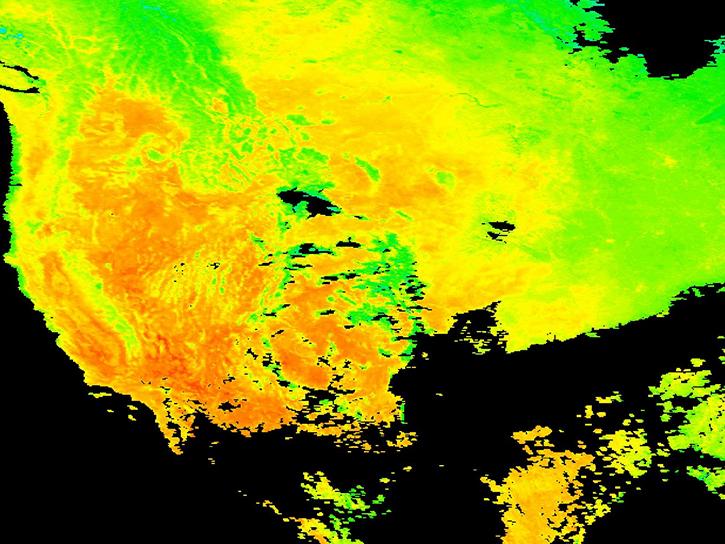Access a range of datasets and data tools to further your research into surface thermal properties.
Earth’s land surface interacts with thermal energy from sunlight in a variety of ways. Some terrain types readily absorb and retain heat, while others diffuse heat quickly. Factors that determine land surface thermal properties include how much sunlight the land reflects back into space, the presence or absence of vegetation, and the land's water or ice content.
The thermal properties of an area of land can greatly affect ecosystems and agriculture. Decision makers often take heat exchange with land into account when creating water irrigation strategies, managing crop health and water stress, and reducing heat island effects in urban areas.
NASA’s Earth-observing satellites collect data on several factors that help researchers model surface thermal properties, such as land surface temperature, soil moisture, and albedo. These data products help scientists better understand Earth’s energy cycle and enable studies into weather, agriculture production, and ecosystem health.
Learn How to Use Surface Thermal Properties Data




Join Our Community of NASA Data Users
While NASA data are openly available without restriction, an Earthdata Login is required to download data and to use some tools with full functionality.
Learn About the Benefits of Earthdata LoginFrequently Asked Questions
Earthdata Forum
Our online forum provides a space for users to browse thousands of FAQs about research needs, data, and data applications. You can also submit new questions for our experts to answer.
Submit Questions to Earthdata Forumand View Expert Responses